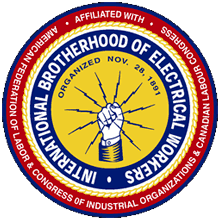June 13, 2016
By Michael Jordan
Hospital Pac-Man: How Practice Acquisitions Game the System
Large hospitals and health systems continue to gobble up physician practices and clinics to build their empires. Between 2006 and 2015, there were 1,500 healthcare provider acquisitions. In the first five months of 2015 alone, this trend hit a record acquisition volume of $241 billion.
Providers are purchasing non-acute-care facilities, including clinics or physician practices, at a level that could reach 84 percent of total acquisition volume by 2018 — up an astounding 74 percent from current levels. In this issue of the MagnaCare Labor Bulletin, we take a look at this trend to understand why it’s happening, and how it will affect labor union health plans.
Learn 5 key trends observed when hospitals turn to physician practice acquisitions for growth
Becker’s Spine Review
Is there a place for the independent practice in tomorrow’s healthcare system?
Medical Group Practice Association
Good Intentions
Hospitals acquire practices as a way to better coordinate care and gain more direct admissions and referrals. The movement aligns with the goals of healthcare reform because physicians and hospitals working together in Accountable Care Organizations (ACOs) can provide care better than the traditional fee-for-service and solo practice models. The intent of consolidation is to reduce costs and improve quality. The problem is that hospitals are very expensive and complex organizations, and not known for their efficiency and low prices.
Why patient costs are higher in hospital-owned physician groups compared with physician-owned organizations Berkeley News
What’s Really Going On?
Reading between the lines, we see that consolidation gives hospitals a stronger bargaining position with insurance plans, and unprecedented leverage to inflate medical bills. Unfortunately, this is exactly what is happening.
The average hospital outpatient department prices for common imaging, colonoscopy and laboratory services can cost double or triple the price for the same services provided in a physician’s office or other community-based setting.
Researchers have also linked hospital consolidation to a rise in spending on drug-based cancer care. One study found that each 1-percentage-point increase in the proportion of medical providers who were affiliated with a hospital was associated with a 34-percent increase in annual average spending per person on outpatient cancer drug treatment.
Source:
Discover evidence of national healthcare price differentiation and variation by site of care
AMJC
Learn more about the impact of provider consolidation on outpatient prescription drug-based cancer care spending
What Can Be Done?
MagnaCare responds to price hikes by shifting administration to the most appropriate care site. For example, a home infusion company might make more sense for a patient receiving chemotherapy rather than a hospital that charges extra fees for the same treatment.
Plan management strategies should also include online tools to arm members with transparent pricing information so that they can make price and quality comparisons, and avoid costly, low-value care.
It’s called beating them at their own game. As hospital systems grow larger, and more powerful, plan sponsors should educate members, and give them a wide range of care setting options to keep costs under control.
Inside Healthcare with MagnaCare President Michael Jordan
Click here to view Michael’s video on the impact of Physician practice acquisitions.



